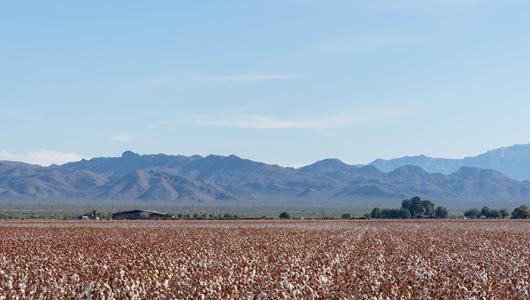USDA is making $2 million available this year to farmers in specific watersheds across Alabama, Arkansas, Kentucky, Missouri, New York, and Washington.
Are you interested in learning more about how the conservation practices on your farm are reducing erosion and improving the health of watersheds downstream? If so, USDA is working with farmers in these states who are interested in setting up edge-of-field monitoring stations on their farms.
Edge-of-field monitoring allows you to monitor the amount of nutrients and sediment in water runoff at the field level. It tells you what is happening on your field so that you can make informed decisions about your use of inputs and conservation practices. These decisions increase efficiency and maximize yields while also conserving natural resources – a win-win for science and thriving agricultural lands.
Edge-of-field Monitoring
Through edge-of-field monitoring, NRCS works with farmers and conservation partners to measure the runoff from a field. They determine the amount of sediment and nutrients being lost and compare the results from different conservation systems. This helps farmers understand which conservation practices are best at preventing sediment and nutrient runoff and helps NRCS measure the effectiveness of practices available through programs.
Monitoring stations measure water quality right at the edge of farm fields. This is more accurate than estimates from in-stream measurements, which are subject to influences outside of the farmer’s control. Edge-of-field monitoring, combined with instream monitoring, can supply a more thorough picture of improvements within a watershed.
The data collected is kept confidential for the farmer’s use and for use by the conservation partners responsible for monitoring.
Common Questions Answered by Monitoring
Questions that edge-of-field monitoring can answer include:
-
What is the effect of nutrient management and Irrigation Water Management on a rice/soybean rotation in the Mississippi River Basin?
-
Do cover crops reduce nutrient runoff in a corn/soybean rotation?
-
Do grassed waterways affect nutrient runoff?
-
Is the Phosphorus Removal System effective in removing phosphorous from tile drainage?
About the Program
Since 2013, NRCS has funded over 40 edge-of-field projects in 10 states: Arkansas, Indiana, Kentucky, Missouri, New York, Ohio, Vermont, Washington, Wisconsin, and Alabama.
These projects are in priority watersheds, including the Mississippi River Basin, Lake Champlain, the Great Lakes, and state priority areas.
For more information about edge-of-field monitoring, contact your local USDA service center.


